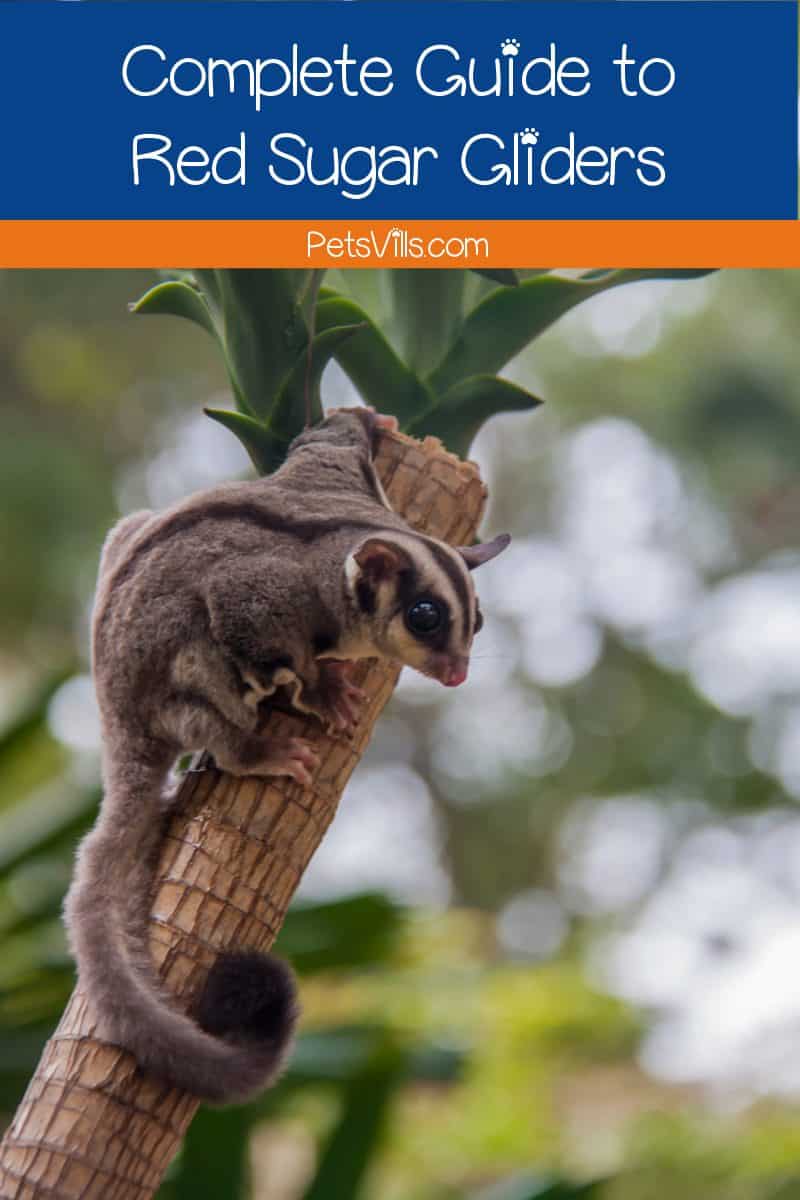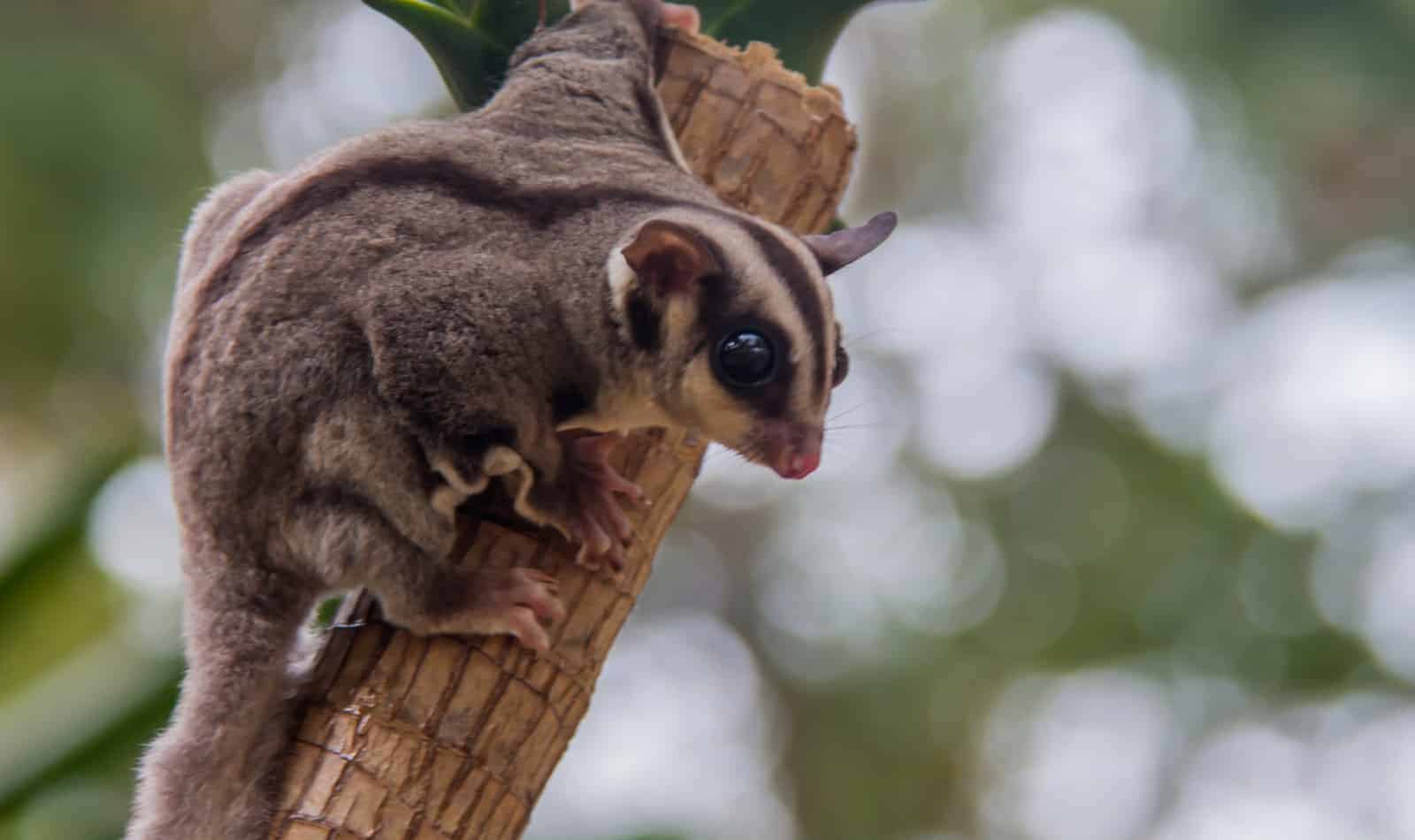Are you trying to decide whether a red sugar glider is a suitable pet?
I’ll break down everything you’d need to know before bringing one into your home.
These discussions should make it clear whether you’re ready to care for one or two of these cute animals.
Let’s not waste any more time and dive right into the task at hand.
You may also like: How to Introduce Sugar Gliders to Each Other

What is a Red Sugar Glider?
Red or strawberry sugar gliders are definable by their reddish toned fur. It’s one of the most uncommon traits among sugar glider variations.
Another distinguishing characteristic would be their garnet-colored eyes.
This trait isn’t present in every red sugar glider, but it’s a notable one among this coloring.
Related: Cinnamon Sugar Gliders
Sugar glider owners and breeders consider the garnet-colored eyes super rare.
If a glider has this quality, it can significantly raise their price from what you’d pay for a standard red.
Most people don’t seem to realize that a red’s coloring isn’t natural.
In other words, you won’t see sugar gliders with reddish toned fur in their natural habits.
The mutation responsible for this reddish fur seems to be a recessive trait.
It’ll require the presence of two alleles to show up as a visible quality on a sugar glider.
Red coats can also result from a sugar glider being heterozygous for cremeino, het for an albino, or a combo of genes.
MUST READ: Different Types of Sugar Gliders
How Much Does a Red Sugar Glider Cost?
The price of red sugar gliders can vary drastically based on several factors.
But most of them will fall between $400 and $2000 for a single glider.
One of the main deciding factors would be whether the glider has those garnet-colored eyes.
If they do, the price can skyrocket quickly to the near $2000 range.
Of course, the price will also be higher for joey red sugar gliders than for adults.
Pet owners tend to always favorite joeys, puppies, and kittens over their adult counterparts.
It’s a shame because many grown animals often find themselves placed into shelters looking for their forever home.
People who do decide to buy a red sugar glider must ensure the breeder’s USDA certified.
Otherwise, the gliders might have been born using some unsanctioned means that no pet owner wants to support.
I’d recommend not purchasing these animals over the internet, either.
This advice is a bit hard to follow right now because of COVID, but it’s an essential part of any quality buying experience.
After all, it’ll allow you to interact with the sugar glider before committing.
I’d suggest setting up a visit with the glider before taking them home.
This visit provides an opportunity to look for any red flags with the animal or the breeder’s practices themselves.
Talking to other people who bought for your breeder is another smart move.
Breeders should also be able to provide you with information on the glider’s lineage, health history, and temperament.
Can I Adopt a Red Sugar Glider?
If you aren’t too keen on paying the $400 to $2000 price, a red might show up at a shelter or rescue group.
But you’ll need to be vigilant as these gliders are in high demand.
This aspect alone makes them a rare sight at these places, but you never know.
You’re much more likely to encounter a standard gray than a red/strawberry glider at rescue groups or shelters.
Red sugar gliders who do end up in these places are more likely to be adults, as well.
Some people prefer helping out a grown glider who’s had a hard life instead of spending money on a brand new joey.
How Many Red Sugar Gliders Should I Get?
As with any sugar glider, reds are social animals who thrive in households with brothers and sisters.
Most experts seem to agree that having more than one is the right move.
Each one of these gliders doesn’t have to be the same variation.
There’s no reason a red sugar glider won’t get along with a standard gray or another coloring.
But it’s vital to keep sugar gliders away from other pets, such as cats or dogs.
Gliders often don’t mesh with pets of different species, and fights between them aren’t uncommon.
ALSO READ: Sugar Glider vs Flying Squirrel
Care and Temperament Needs
Caring for a red isn’t any different than a standard gray, ruby or caramel sugar gliders.
Their unique fur coloring doesn’t come with any downsides concerning its health like a person might assume.
In any case, an owner who follows the tips and guidelines laid out within this article should be more than fine.
I’d only add one thing, which is human interaction with your sugar glider is crucial.
It’s an effective way to make sure a bond builds between you and your favorite marsupial.
An excellent way to achieve this bond is by allowing them to ride in your shirt pocket during the day.
Some people like putting them in a pouch around their necks, which is another easy way to interact with them.
Owners need to be patient during the bonding process, though.
Some gliders won’t be used to being handled when you first get them, which could slow progress.
It could take them a little time before warming up.
Sugar gliders are a lot more vocal than new owners usually assume, as well.
These exotic pets will have no problem letting you know when they’re upset, hungry, or frightened.
They’re capable of making several different noises that will become commonplace in our home.
An angry glider will also often give an audible warning before attempting to bite.
If you have any additional questions about red sugar gliders, please let me know in our comment section.
SO, DO YOU THINK A RED SUGAR GLIDER IS RIGHT FOR YOUR FAMILY? TELL US BELOW!

My name is Ben Roberts, and I absolutely love animals. So, naturally, I love writing about them too! As far as my animals, I have a Pit-bull, a Beagle-lab mix, a Chihuahua, and one old cat. Each one of them provides me with a new adventure every day. And the best part is they’re all best friends. Well, except the cat when he gets a little annoyed.
FIND HIM ON: FACEBOOK and TWITTER.
Read his latest ARTICLES
Learn more about Benhere



![Cute Sugar Glider Drinking From The Bottle [Must-Watch Video]](https://petsvills.com/wp-content/uploads/2022/09/Cute-Sugar-Glider-Drinking-From-The-Bottle-Must-Watch-Video-211x150.jpg)
